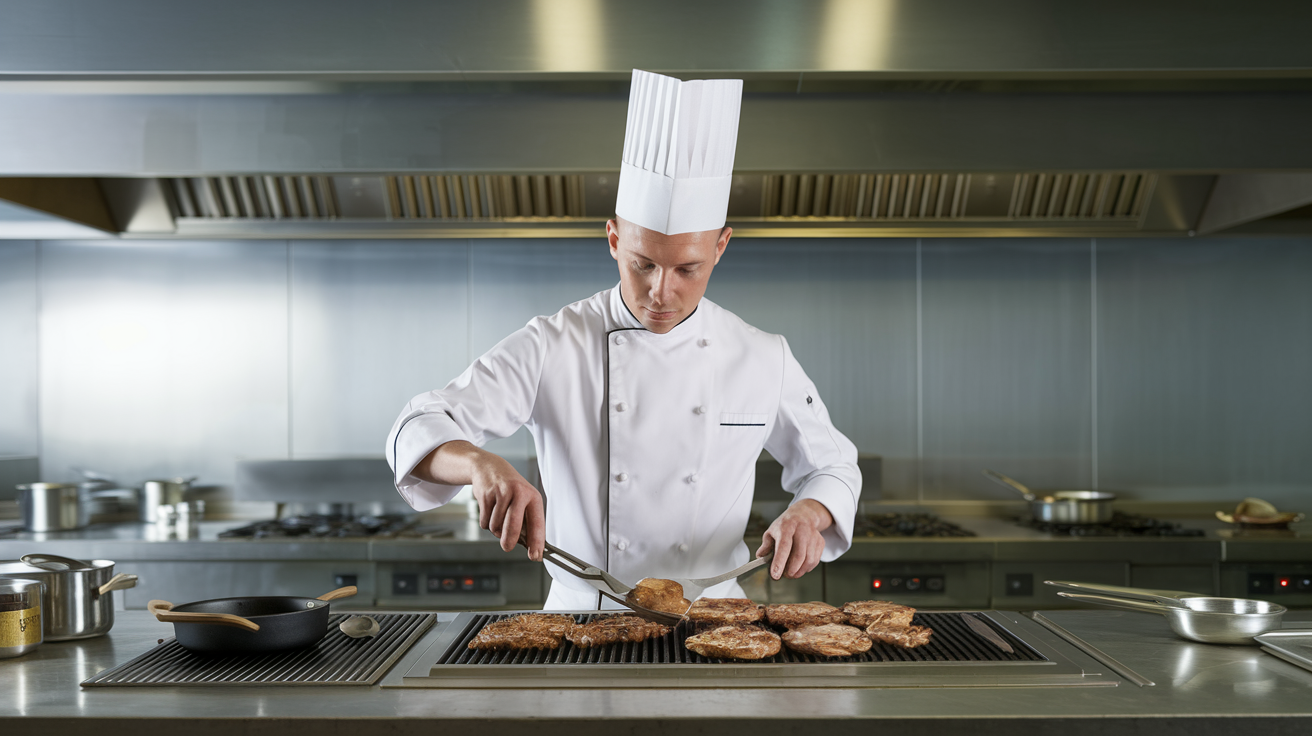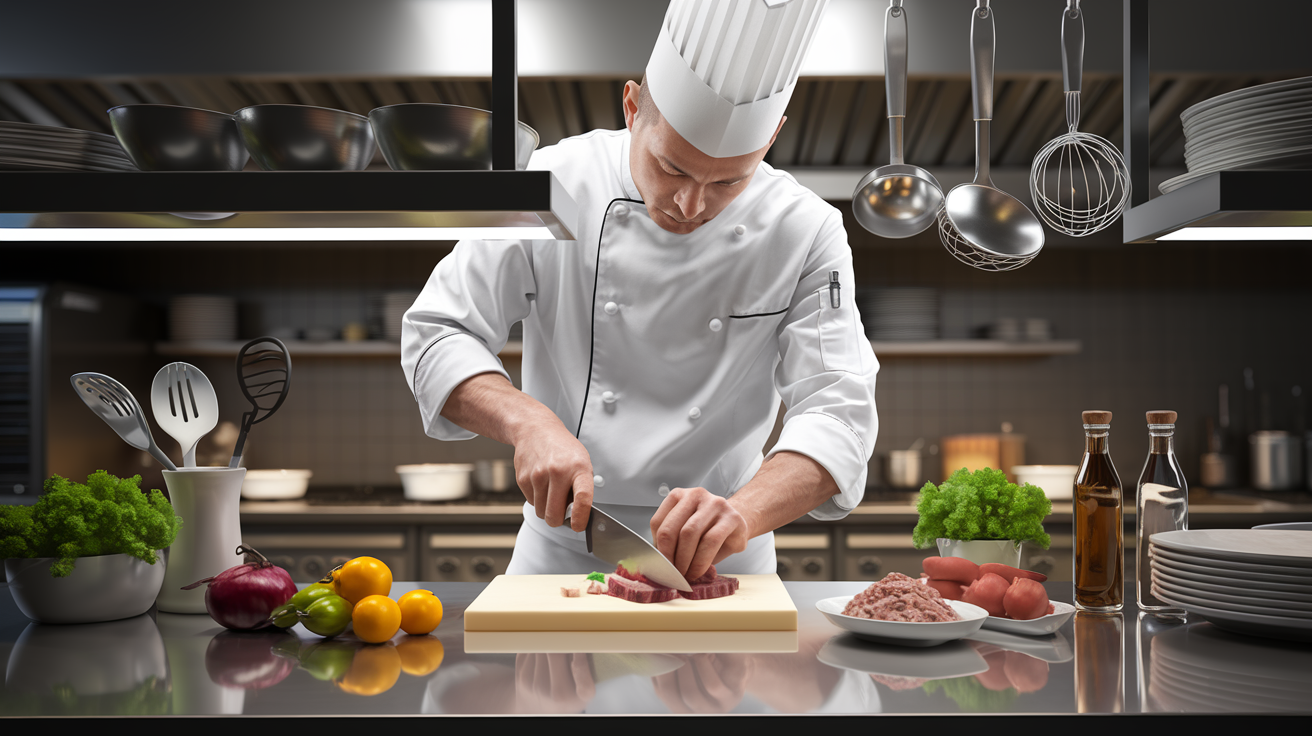Whip Up a Bestseller: Your Guide to Publishing a Food Genre Book in 2025
Got a passion for pasta, a knack for baking, or a secret to a killer curry? Here's a tip: the world of food is a vibrant, ever-evolving culinary landscape, and there's never been a better time to share your delicious insights with the world. Think about it: bookstores and e-readers are packed with everything from stunningly photographed cookbooks to deeply personal food memoirs and practical guides to healthy eating. But how do you actually get your food-focused creation out there and into the hands of eager readers?It's more than just having great recipes; it's about crafting a book that people can't put down, or more importantly, can't stop cooking from.
The food genre is incredibly diverse and appealing. You might be dreaming of a beautifully designed cookbook thats as much art as it is instruction, or perhaps a more intimate food memoir that weaves personal stories with the dishes that shaped your life. Maybe you're an expert in a particular diet or cooking technique and want to create a definitive guide. Whatever your niche, there's an audience hungry for it. However, navigating the publishing world can seem as complex as mastering a souffl. Don't worry, though. We're here to break down the essential steps and give you the confidence to turn your culinary passion into a published book.
This isn't just about jotting down ingredients and instructions. Its about building a narrative, creating an experience, and connecting with your readers on a visceral level a connection often forged through taste and smell. By understanding what makes a food genre book successful, you can ensure your own work stands out in a delicious crowd. So, grab a coffee (or maybe a snack!), and let's dive into how you can get your food book published and shared with the world.
Crafting Your Culinary Narrative: More Than Just Recipes

Here's the thing: people don't just buy cookbooks for recipes; they buy them for inspiration, for a story, and for an experience. If you're writing a cookbook, think about the overarching theme. Is it quick weeknight meals for busy families?Is it exploring the regional flavors of a specific country?Or maybe it's a deep dive into vegan baking?Your theme acts as the spine of your book, holding everything together and giving readers a clear reason to choose yours over the countless others out there. This narrative thread should also be present in how you present your recipes.
Beyond the recipes themselves, consider the "why" behind them. What makes this dish special to you?What memories does it evoke?Injecting personal anecdotes, tips, and the cultural context of your food can elevate a simple recipe into something truly engaging. A food memoir, for instance, is almost entirely built on this narrative. These books often explore themes of identity, family, travel, and healing, with food acting as the central thread that connects it all. Think of authors who have masterfully woven their life stories with their culinary journeys; their books resonate because they offer an emotional connection alongside delicious food.
Even in a straightforward guide or a health and wellness book focused on food, a narrative can make a huge difference. Instead of just listing healthy meals, you could frame it around a journey to better health, sharing your own struggles and triumphs, and how specific dietary approaches or recipes helped you. This relatable approach builds trust and makes the information more digestible and motivating for your readers. What I've found is that the most successful food books are those that offer not just sustenance, but also connection and a sense of discovery.
Navigating the Publishing Maze: From Manuscript to Market

Once you've poured your heart and soul into your manuscript, the next big step is getting it out there. There are generally two main paths to publishing: traditional publishing and self-publishing. Traditional publishing involves finding a literary agent who will then pitch your book to publishing houses. This route often means less upfront work for you, a professional editing and design team, and wider distribution, but it can also be a lengthy and competitive process with less creative control and a smaller royalty share. The key here is a killer proposal and a perfectly polished manuscript that showcases your unique food voice.
Self-publishing, on the other hand, gives you complete control over every aspect of the process from content and design to marketing and pricing. This path is often faster and can offer higher royalty rates, but it requires you to manage everything yourself, including professional editing, cover design, interior formatting, and distribution. For food genre books, this means investing in high-quality photography if you're going the cookbook route, or ensuring your formatting is impeccable for easy readability, especially if it's a guide or cookbook. Its a lot of work, but incredibly rewarding.
What's more, the lines between these two paths are blurring with hybrid publishing options. No matter which route you choose, a strong understanding of your target audience is crucial. Who are you writing for?What are their needs and desires when it comes to food content?Knowing this will inform your content, your marketing, and ultimately, your success. This is where platforms like FastRead can be incredibly helpful in the initial stages of content creation, giving you a solid foundation to build upon, regardless of your chosen publishing path.
Making Your Food Book Shine: The Visual and Editorial Appeal
For any food genre book, but especially cookbooks, visual appeal is crucial. Readers eat with their eyes first, so high-quality photography or compelling illustrations are non-negotiable. If you're self-publishing, this often means hiring a professional food photographer or investing in the equipment and skills to do it yourself. Each photo should not only look delicious but also accurately represent the finished dish and be clear enough for readers to follow along with the recipe. Think about the styling, the lighting, and the overall mood you want to convey.
On the editorial side, clarity and consistency are key. I've noticed that recipes need to be foolproof, with precise measurements, clear instructions, and logical steps. A recipe that's missing a crucial ingredient or has ambiguous instructions will frustrate readers and damage your credibility. This is where rigorous editing and proofreading come into play. Think about it: a good editor will not only catch typos and grammatical errors but also ensure your voice is consistent, your narrative flows smoothly, and your recipes are easy to follow.
What I've found is that even the most seasoned home cooks appreciate a well-organized book. This means a clear table of contents, an index that makes finding recipes a breeze, and perhaps even cross-referencing between recipes (e. g. , "Serve with X sauce from page Y"). Whether you're publishing a Cookbook, a Guide / How-to, or even a Memoir that heavily features food, the attention to detail in both visuals and text makes a world of difference to the reader's experience.
How FastRead Helps You Create Food Content
Truth is, creating quality content used to take forever. But FastRead changes the game entirely. One thing to keep in mind: whether you're writing about food, technology, business, or any other topic, fastread's ai handles the heavy lifting. It can help you brainstorm recipe ideas, outline your book structure, generate compelling descriptions, and even draft sections of your text. This allows you to focus on the unique, personal touches that will make your food book truly special, like developing your signature recipes or sharing your most cherished culinary memories.
FastRead is designed to be your ultimate writing partner, accelerating the process without sacrificing quality. You can input your initial ideas, and the AI can help flesh them out into coherent chapters or recipe introductions. Need help with recipe variations or troubleshooting common cooking issues?FastRead can provide suggestions and explanations. Its like having a whole team of editors, researchers, and content creators at your fingertips, ready to assist you at any stage of your writing journey. This means you can spend less time staring at a blank page and more time in the kitchen creating delicious content.
Book Genres FastRead Supports
FastRead works with tons of different genres:
Fiction: Science Fiction, Fantasy, Romance, Thriller, Mystery, Historical Fiction, Horror, Supernatural, and many more. Non-Fiction: Art & Photography, Autobiography, Biography, Cookbook, Diary, Dictionary, Encyclopedia, Essays, Health & Wellness, Guide / How-to, Memoir, and many more.
Bringing Your Food Book to Life: The Final Polish and Launch
Before you hit that publish button, a final polish is essential. This is where you review everything with a fine-tooth comb. Read your book aloud this is one of the best ways to catch awkward phrasing or sentences that just don't flow. Get trusted friends or family members who understand your niche (or are simply avid readers) to beta read your manuscript. They can offer fresh perspectives on clarity, engagement, and any potential gaps in your content. Think about your book cover design too; it's the first impression a potential reader will have, and for food books, it needs to be visually stunning and representative of your content.
Most people don't realize once your book is polished and ready, it's time to think about your launch strategy. This isn't just about making it available; it's about building anticipation and reaching your audience. For food books, this might involve engaging with food bloggers, culinary influencers, and relevant online communities. Social media platforms like Instagram and Pinterest are goldmines for food content, so building a presence there can significantly boost your book's visibility. Consider offering early review copies to key people in the food world, and perhaps even planning a virtual launch event or Q&A session.
The success of your book launch hinges on connecting with the people who will love your food the most. Build an email list, engage with your followers, and make them feel like theyre part of your culinary journey from the start. A well-executed launch can create buzz and momentum that carries your book forward, ensuring it finds it's way into the kitchens and hearts of readers everywhere. Your carefully crafted recipes and personal stories deserve to be shared, and a strong launch strategy is your ticket to making that happen.
What's Your Next Step?
So, there you have it a roadmap to publishing your food genre book in 2025. From perfecting your recipes and crafting your narrative to navigating the publishing process and ensuring your book looks and reads beautifully, its a journey thats both challenging and incredibly rewarding. Remember, your unique perspective and culinary voice are your greatest assets. Don't be afraid to inject your personality, share your passion, and tell the stories that make your food unforgettable.
Ready to turn your ideas into a published book?FastRead can help you create professional content in hours, not months. Whether you're developing your first cookbook or an in-depth guide to plant-based eating, FastRead's AI-powered platform can assist with outlining, content generation, and formatting, giving you a significant head start. From my experience, imagine having a beautifully structured manuscript ready for editing in a fraction of the time it used to take. Get started today and let FastRead help you bring your delicious vision to life!